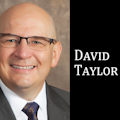Processes improve when SPD, surgeons engage directly
Today’s Sterile Processing (SP) leaders and their staff members practice in very complex, high-stress environments. The constant pressure to do more with less as a result of staffing shortages, budget cuts, limited resources and, at times, increasing procedure volume, can create moral conflict — sometimes, making employees feel they must choose between doing what is right or doing what it takes to meet surgeon and scheduling demands, even if that means cutting corners.
Although no employee ever wants to jeopardize patient safety, it is nonetheless a potential outcome because high-pressure, high-stress situations often lead to high-risk SP environments. Ensuring and preserving our commitment to patients requires significant moral courage, exceptional preparation and dedication. It also involves interdisciplinary teamwork and effective communication — and, at times, some difficult conversations with SP’s most demanding customers.
Meet with surgeons
Too often, surgeons experience issues with the instruments used in the operating room (OR). When something goes wrong, it’s often the SP professionals who are blamed. What the surgeon may not know, however, is that every instrument they use goes through many hands, and everyone who touches that instrument holds some level of responsibility for its care, handling and functionality.
It’s important to educate surgeons and others in the surgical suite (and end users in other patient care areas) about the proper care and handling of instruments and the time it takes to properly clean, disinfect and render instruments and equipment safe for reuse. They may also need to be reminded of the many standards, guidelines, regulations and internal policies and procedures that must be followed in the name of compliance, quality care and patient safety.
Of course, when it comes to building better interdisciplinary relationships, SP professionals also share the responsibility. They must commit to visiting with surgeons and other customers who rely on their services, and listening to their challenges, needs and concerns. Having honest discussions about what customers’ experiences have been as a result of the work from the SPD is key to better outcomes. Communication can be as simple as meeting at the scrub sink to engage and understand the surgeon’s perspective.
As the relationship grows, SP leaders can take their commitment further by meeting surgeons in their offices. Surgeons may share valuable insight into changes their practice may be going through, new procedures they may be adding to the surgical schedule or, perhaps, their decision to take on new partners who will be performing surgery at the facility. Paying attention to these subtleties will allow SP leaders and their teams to manage changing demands proactively. Having close contact with surgeons can also help SP leaders determine who the physician leaders are within the specialties—and who may be able help champion initiatives that will support the SPD’s efforts.
When working to improve relationships with surgeons and other end users, it’s imperative for SP leaders to educate them on SP-related workflows, processes and pain points. This is an opportunity to be transparent, so both parties understand what is at stake. Consider inviting surgeons to the SPD to review their instrument sets — and while they are there, invite them to take a quick tour of the department. When they see firsthand the sheer number of instrument sets returned to the decontamination area (and the condition of the instrumentation when it arrives), they will gain powerful perspective. Note: Be sure to share with surgeons the various processes needed to reprocess an instrument set and the length of time it takes to properly clean, disinfect and reprocess those items.
Instrument set review
When reviewing surgeons’ instrument sets, explain how unnecessary items in those sets increase reprocessing time (even instruments that are not used during a procedure require meticulous attention and thorough reprocessing). If SP professionals could remove those often unnecessary items, reprocessing becomes more efficient, and instrument inventory levels could potentially be increased by creating new sets from the excess instruments. Adding to the inventory also allows the SPD to take sets out of the rotation to properly inspect, sharpen and repair them, which adds value for the surgeon.
If a surgeon is reluctant to reduce their set size, that is an opportunity to explain the task and average time requirement of turning over instruments. If the average is three hours, what impact would that have on a surgeon’s practice? If the surgeon understood how reducing set size of unused items could save time, resulting in faster turnarounds and more set inventory, they may be more apt to agree. Also, be sure to share with the surgeon how reducing set size will save time in the OR (less inventory equals faster set-up times, counting procedures, and turnovers).
Beyond reviewing set size and contents, it’s beneficial to explain to surgeons the inventory on hand for their specialty. For example, they may routinely schedule the same five procedures every Monday. What they may not know is the hospital only has three instrument sets for that procedure and one set may be out for repair. When surgeons have the full picture, they can make calculated decisions that will not only help themselves but also the processes.
Building bridges
Collaborating directly with the end users gives SP leaders the opportunity to develop a professional relationship with their surgeons and help those surgeons better understand the work that goes on in the SPD. Most surgeons do not realize how hard SP professionals work every day or the time needed to safely reprocess instrumentation and other reusable items. When SP leaders build a bridge from their department to the surgeons, they begin to see ways to enhance the relationships and build processes that will streamline their jobs and create a safer environment.
About the Author

David Taylor
Principal, Resolute Advisory Group LLC
David L. Taylor, MSN, RN, CNOR is an independent hospital and ambulatory surgery center consultant and the principal of Resolute Advisory Group LLC, in San Antonio, Texas.
